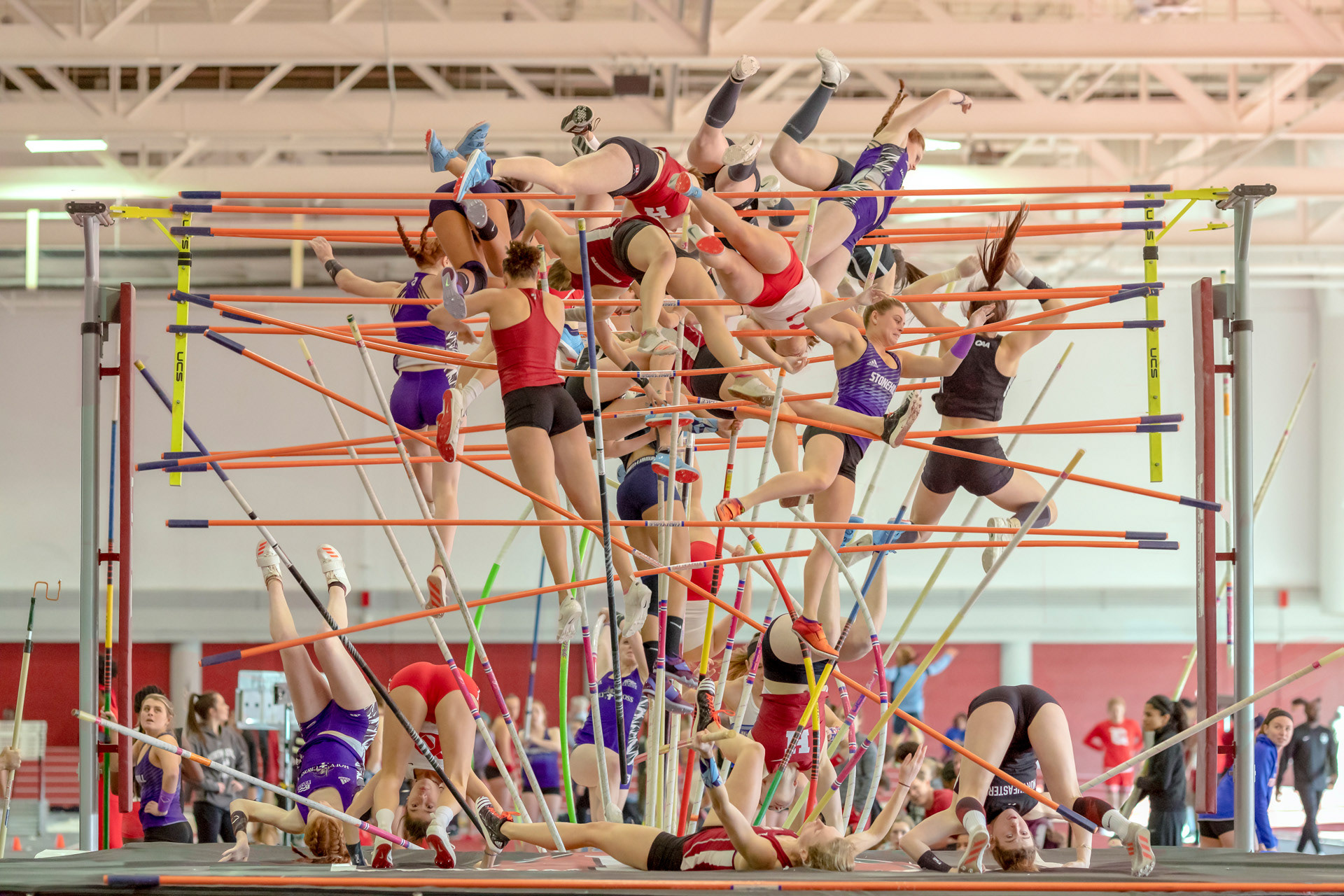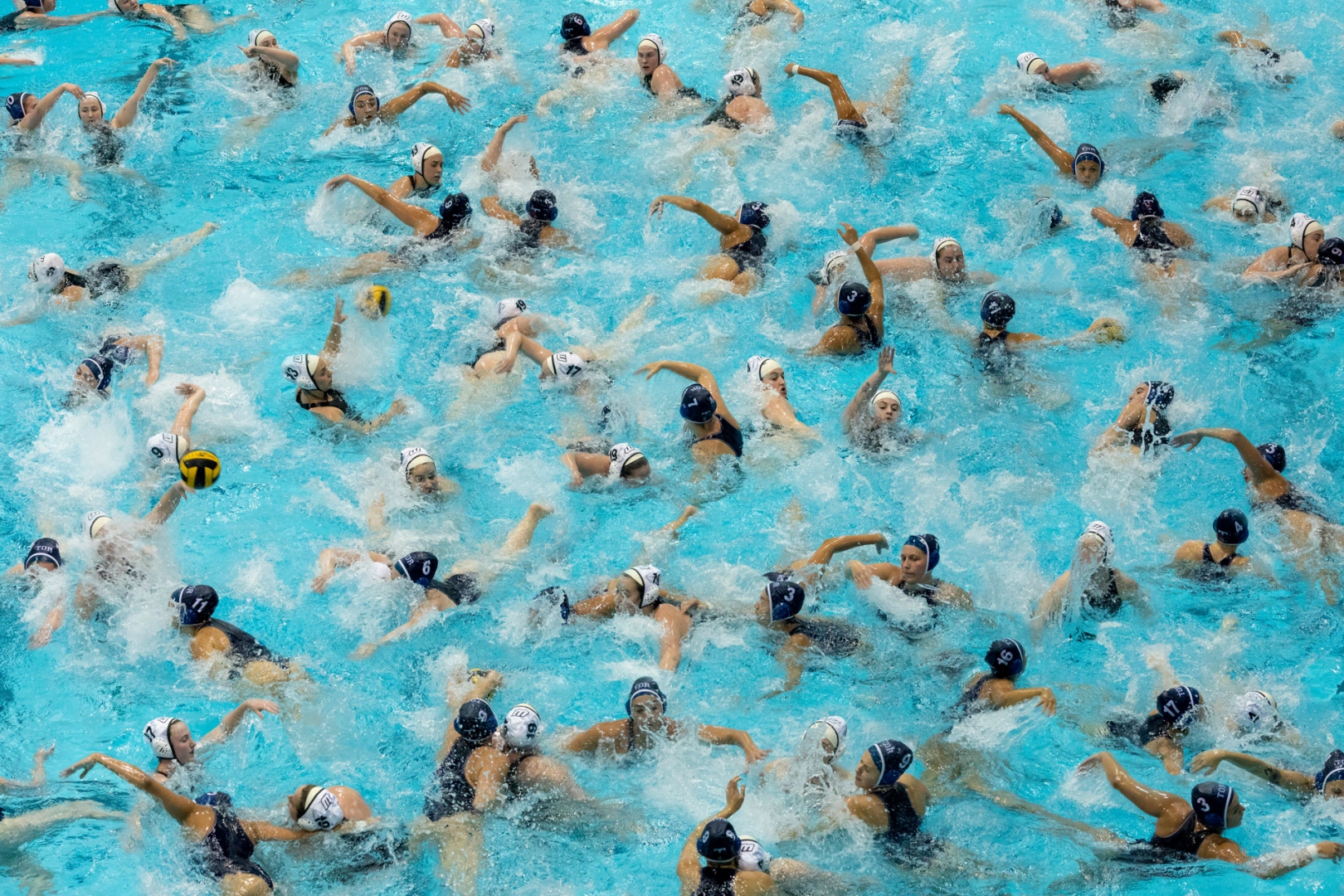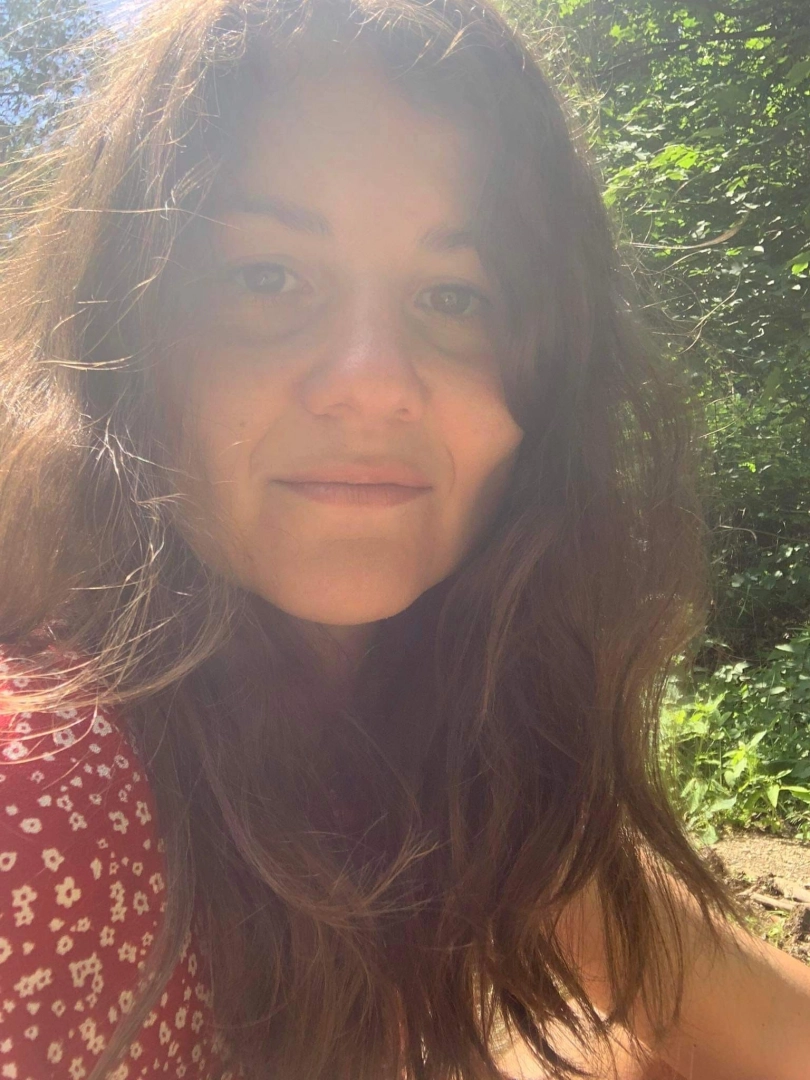Hockey, basketball, tennis or swimming… these and many other sports appear in Pelle Cass’s photographs, and yet he is not your typical sports photographer. Digitally manipulated compositions that he creates by combining multiple shots originally didn’t even focus on sport. Athletic competitions becoming the ideal environment for his work was an accidental discovery.

Humans as a part of Humanity
„I was never a good snapshot photographer, I never managed to capture the right moment. When I finally decided on one and pressed the shutter it was never it. I often tried to capture the beautiful atmosphere I had in front of me, you know, like when you try to take a picture of the full moon, but it never worked. To me, photography still seemed to be a weak and wanting medium,” Pelle Cass explains in one of his interviews. “I had the idea to layer a lot of weaker moments together to combine their potency,” this is how Cass’s renowned photography technique came to be.
Pelle Cass’s photographs mostly capture thick clusters of bodies in sport. His fetishistic interest in the moving human body seems to reference Rubens’s baroque paintings or the works of Hieronymus Bosch. Simultaneously, they can be understood as a commentary on the present time and its issues with overpopulation and the growing inaccessibility of resources.

Cass’s digital compositions flow into one large, pulsing organism where the author offers a view of humanity as a whole. He urges us not to think about humans, not as individuals which are here only for and by themselves, but as parts of a complex system whose result and agent humanity is. The existence of each individual can’t be perceived separately from the others in the same way that no singular moment or action can be separated from those preceding it, happening alongside it or those that will happen in the future.
Sport as order
Pelle Cass was born in 1954 in New York but lived here only until three. His mother was a painter. According to Cass, her paintings were reminiscent of Picasso’s drawings from the 1920s. He claims to have no drawing skills but has always been attracted to visual arts. His whole family had a close relationship with art and so he applied to art school. He has been learning photography since thirteen-years-old, at first from instructions in magazines.

These days Pelle Cass lives in Boston near several athletic universities where he comes to gather material for his compositions. He developed his famous technique in 2008 and at first, it didn’t focus on sport but on views from his window where he imagined what it would look like if everything that was going on outside happened at once. He compares his technique, which is nowadays copied or elaborated on by many other artists, to attempts to break time, when order turns into chaos (from which a new order is born, as we can see in the photographs).
Cass talks about chaos as a principle he likes to combine with the world of sport exactly because of its origin in order as a high-performance discipline. His technique rose to fame when he started combining it with sports photography which he was led to by an editor of a magazine he worked for at the time. He realised that sport is an ideal environment for capturing the desired snapshots: “Everyone is focused on their or their team’s performance and nobody bothers about some guy who wanders about with a tiny camera”.

Genuineness above all
Pelle Cass claims that he intentionally tries not to seem like a professional photographer and not to draw any attention to himself. He spends a large amount of time near sporting arenas and fields. Naturally, he became a sort of a sports voyeur, an expert in people (or rather athlete) watching. He enjoys observing trends in athletic clothing. He says that thanks to the huge amount of snapshots, he manages to capture patterns that a casual viewer will not pick up on: “I still get surprised by people’s expressions. Sometimes the athletes look almost ecstatically excited, other times I can read a great effort in their faces. Watching the people on the field still surprises me. Photo reporters usually try to capture emotions in sports. I don’t. My goal is to capture movement. When humanity comes through in my photographs, it’s a surprising secondary product, which is maybe even better.”

He places the same importance on working in Photoshop as the physical photographer’s craft. He achieves the expression of chaos in his compositions by a previously designated process: he never modifies or fixes up the people in the individual snapshots. He simply tries to layer them until he reaches the composition he is looking for. He claims that this method helps him to naturally preserve realistic expressions: “The people here are still in their natural environment and their natural positions. This is where my photographs differ from most authors who also work with digital manipulation.“









